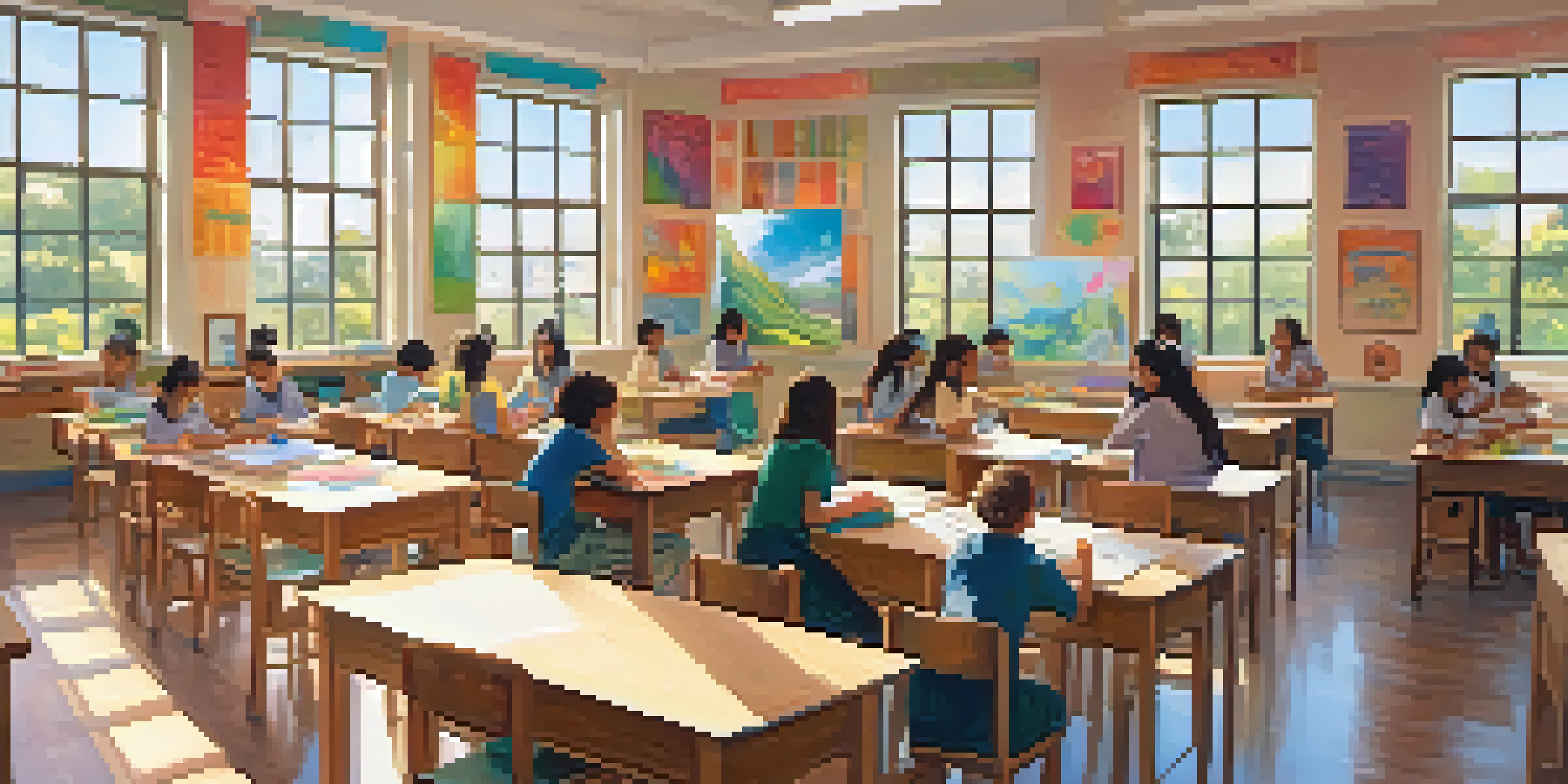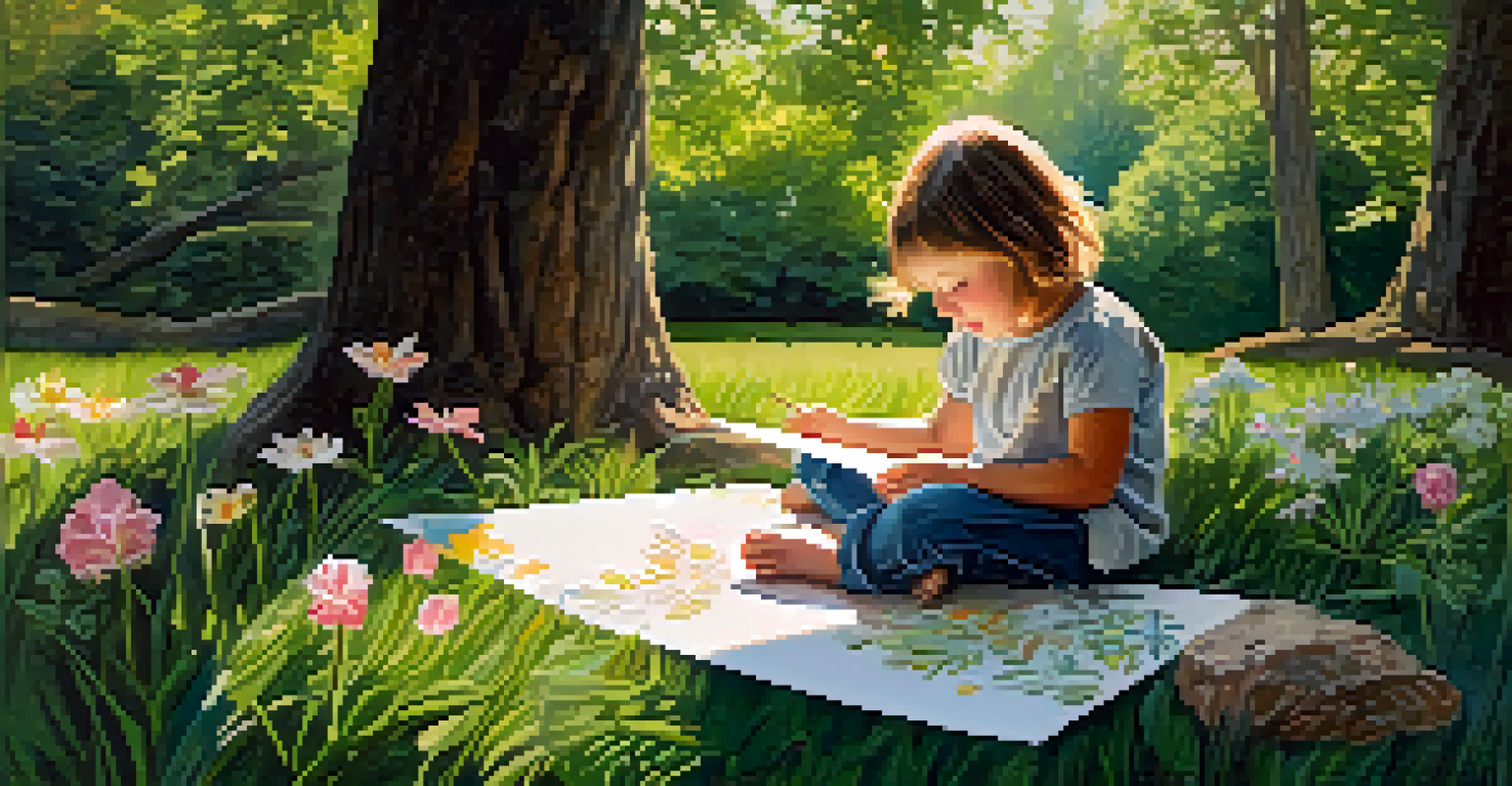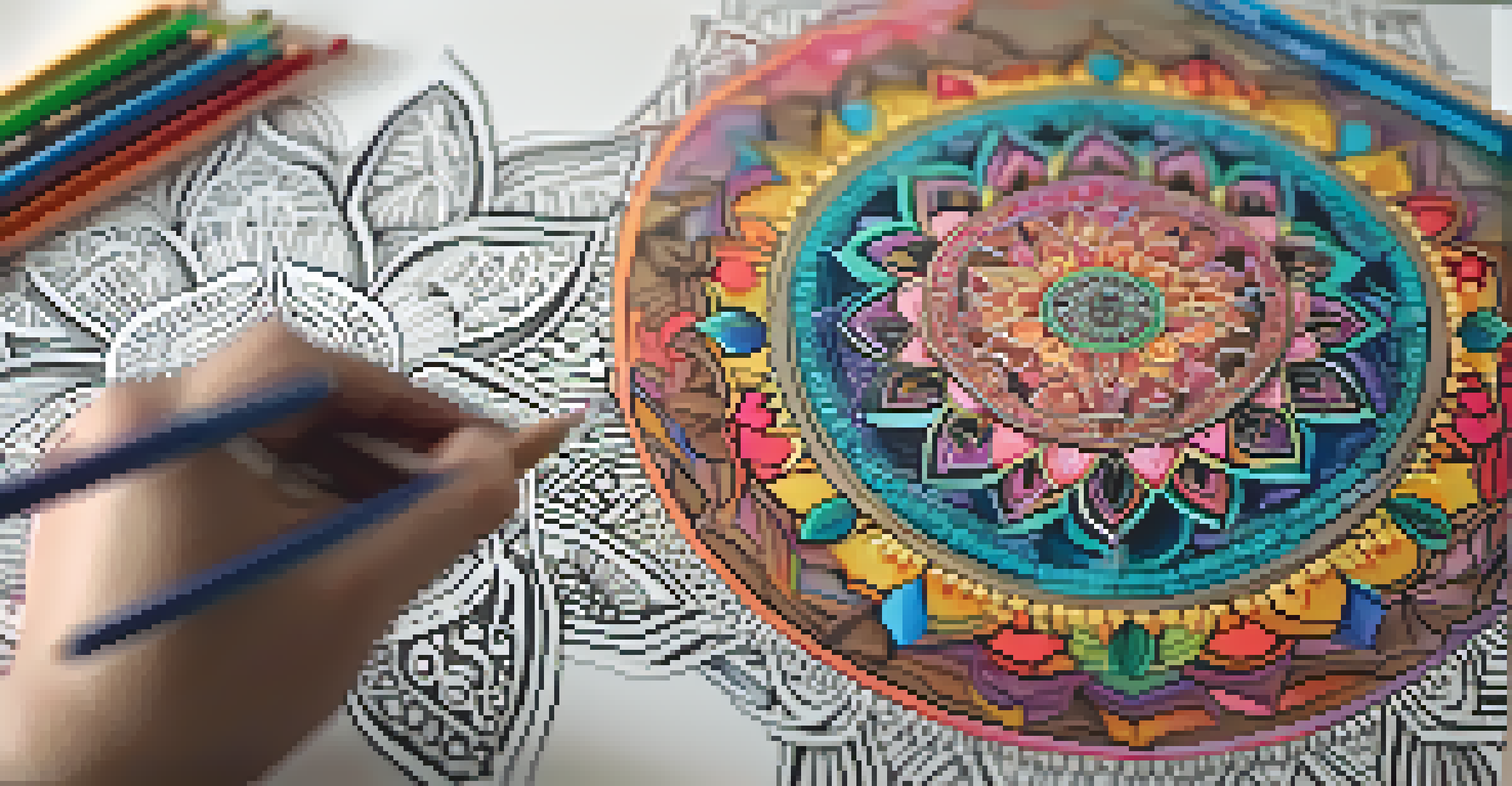Promoting Mindfulness Through Art in Educational Settings

Understanding Mindfulness in Education
Mindfulness is the practice of being present and fully engaging with the moment. In educational settings, it can help students manage stress, improve focus, and enhance emotional regulation. By fostering a mindful environment, schools can create a space where learning is more effective and enjoyable.
Art is the most beautiful of all lies; it is a bridge to mindfulness.
Incorporating mindfulness into education means teaching students to observe their thoughts and feelings without judgment. This can be particularly beneficial for young learners who often juggle various academic and social pressures. By understanding mindfulness, educators can set the stage for a more empathetic and supportive classroom.
Ultimately, mindfulness in education is not just a trend; it's a vital skill that prepares students for life's challenges. When students learn to be mindful, they become more resilient and better equipped to navigate their emotions and relationships, leading to a more harmonious school environment.
The Role of Art in Promoting Mindfulness
Art serves as a powerful medium for expressing emotions and thoughts, making it an ideal tool for promoting mindfulness. Engaging in creative activities allows students to immerse themselves in the present moment, helping them to focus on the process rather than the outcome. This shift in focus is a key aspect of mindfulness.

When students create art, they often enter a state of flow, where time seems to stand still, and worries fade away. This immersive experience can enhance their ability to concentrate and reflect, which are crucial components of mindfulness. Through art, students learn to appreciate their creative process, leading to greater self-awareness.
Mindfulness Enhances Student Well-Being
Integrating mindfulness in education helps students manage stress, improve focus, and navigate their emotions.
Moreover, art can provide a safe space for students to explore and express their feelings. Whether it's through painting, drawing, or sculpture, students can channel their emotions into their work, fostering a deeper understanding of themselves and their experiences. This self-exploration is fundamental to cultivating mindfulness.
Integrating Art into Mindfulness Practices
Integrating art into mindfulness practices can take many forms, from guided art sessions to free expression time. Educators can initiate activities where students create artwork while focusing on their breathing or the sensations in their bodies. This combination allows students to ground themselves and connect their creative expression with mindfulness.
Mindfulness means being awake. It means knowing what you are doing.
For example, a simple exercise could involve students drawing or painting their feelings while listening to calming music. This not only enhances their artistic skills but also encourages them to reflect on their emotions in a mindful way. Such practices can help students develop a routine that prioritizes both creativity and well-being.
Furthermore, integrating art into mindfulness can help create a community of support within the classroom. When students share their artwork and experiences, they foster connections and empathy, contributing to a positive classroom culture. This sense of belonging is essential for nurturing mindfulness and emotional health.
Art Techniques That Enhance Mindfulness
There are several art techniques that specifically enhance mindfulness, such as mandala drawing, collage-making, and nature-inspired art. Mandalas, with their intricate patterns, encourage students to focus on the repetitive motions of drawing, which can be meditative. This practice helps cultivate a sense of calm and concentration.
Collage-making is another effective technique, allowing students to explore their thoughts and feelings by assembling images and materials that resonate with them. This form of artistic expression encourages reflection and self-discovery, making it an excellent tool for mindfulness. Students can create personal collages that represent their inner worlds.
Art as a Tool for Mindfulness
Engaging in creative activities allows students to immerse themselves in the present moment, facilitating emotional expression.
Lastly, nature-inspired art, such as painting landscapes or creating sculptures from natural materials, encourages students to connect with their surroundings. This connection to nature can enhance feelings of peace and mindfulness, reminding students of the beauty in their environment. Engaging with the natural world is a powerful way to practice being present.
Benefits of Mindfulness Through Art for Students
Promoting mindfulness through art offers numerous benefits for students. One of the most significant advantages is improved emotional regulation. When students learn to express their feelings through art, they can process their emotions more effectively, leading to reduced anxiety and stress levels.
Additionally, engaging in mindful art activities can enhance students' focus and attention. As they immerse themselves in the creative process, they naturally practice being present, which can translate to improved concentration in their academic work. This dual benefit reinforces the idea that mindfulness and creativity go hand in hand.
Furthermore, the collaborative nature of art projects can foster a sense of community and support among students. As they work together on creative endeavors, they build relationships and develop social skills that are essential for personal growth. This supportive environment can further enhance their overall well-being.
Creating a Mindfulness and Art Curriculum
Creating a curriculum that integrates mindfulness and art can be an enriching experience for both teachers and students. Educators can start by identifying key themes, such as self-expression, emotional awareness, and creative exploration. These themes can guide lesson plans and activities that promote mindfulness while encouraging artistic growth.
Incorporating various art forms, such as painting, drawing, and sculpture, can keep students engaged and excited about the learning process. Teachers can also incorporate mindfulness techniques, such as guided breathing exercises or meditation, at the beginning of each art session to set a positive tone. This combination can enhance the overall effectiveness of the curriculum.
Building Community Through Creativity
Collaborative art projects foster connections among students, enhancing their emotional health and social skills.
Ultimately, a well-rounded curriculum that emphasizes mindfulness through art can lead to profound changes in students' emotional and academic lives. By fostering creativity and self-awareness, educators can equip students with essential skills for navigating both their personal and academic challenges.
Conclusion: The Future of Mindfulness in Education
As educators continue to explore innovative methods for enhancing student well-being, the integration of mindfulness and art will play a crucial role. By promoting mindfulness through creative expression, schools can create environments that prioritize emotional health and resilience. This holistic approach to education benefits not only students but also teachers and the broader school community.
Looking ahead, it’s essential for educational institutions to invest in training teachers on how to incorporate mindfulness and art into their curricula. Providing resources and support will empower educators to create meaningful experiences that inspire creativity and self-reflection among students. This investment will have long-lasting effects on students' lives.

In conclusion, the marriage of mindfulness and art in educational settings is not just an innovative trend; it's a necessary shift towards nurturing well-rounded individuals. By fostering mindfulness through art, we can cultivate a generation of empathetic, resilient, and creative thinkers ready to navigate the complexities of life.